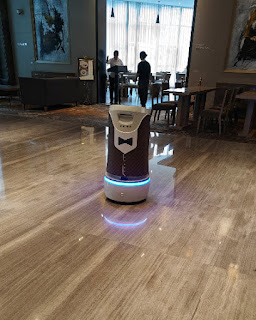Customer Journey and Experience Mapping: a collection of templates and examples
Recently, I followed a great 4 months course about customer journey and experience mapping.
Although I cannot share these slide decks, I will write down a few take aways and I decided to just browse the internet, collect templates about customer journey management and share them here.
Customer journey and experience managenent, will get increasingly more important for brands to attract and to keep customers. There is a declining trend in transactions for ordering at all those "mini" brandend webshops. People more and more directly at marketplaces and platforms like Alibaba, Amazon (in depth video), WeChat, FB messenger, Instagram, Google Shopping. Most brands will have less and less control on their purchasing channels. In this video for example the impact of voice search at Amazon is demonstrated. Amazon will decide which products it will offer to it's customers, even more so then is the case at this moment.
So how to create an excellent customer journey and experience?
In order to know how to map your customer journey, you need to know a few things:
Now for some templates/examples to get started with customer journey mapping.
1)
This template can be used to start a cross channel touchpoint inventory.
3)
A great slidedeck with a customer journey including emotional mapping. Direct download here.
4)

Another powerpoint file (i.c.w. excel) you can use to map your customer journey.
Direct download here.
Then just a few takeaways of customer journey and experience management:
Although I cannot share these slide decks, I will write down a few take aways and I decided to just browse the internet, collect templates about customer journey management and share them here.
Customer journey and experience managenent, will get increasingly more important for brands to attract and to keep customers. There is a declining trend in transactions for ordering at all those "mini" brandend webshops. People more and more directly at marketplaces and platforms like Alibaba, Amazon (in depth video), WeChat, FB messenger, Instagram, Google Shopping. Most brands will have less and less control on their purchasing channels. In this video for example the impact of voice search at Amazon is demonstrated. Amazon will decide which products it will offer to it's customers, even more so then is the case at this moment.
So how to create an excellent customer journey and experience?
In order to know how to map your customer journey, you need to know a few things:
- What is your brand purpose? Why are you here? What are your brand values?
- What is the persona (or persona's) you are targeting? I don't mean a traditional marketing persona, where you can discuss hours about in meeting rooms with traditional marketing people, what you need is a persona you can use in a more agile way, since working a more agile way is often the only way to really add value for both the user and the company. A great tutorial about how to write these persona's can be found here.
- Get some creativity and knowledge of all the latest ecommerce and digital marketing trends (you can start here if you like :) as you need this to create an outstanding customer experience.
- Get some information, user feedback, analysis about your current customer journey. Think about research that you already have, direct feedback from customer service, analyse user behavior or data from your webanalytics software. Just don't forget not always to do what the custoner asks, and also don't assume that you now best and ignore the user. The truth is somewhere in the middle.
Now for some templates/examples to get started with customer journey mapping.
1)
An example of a customer experience map, this one is from Rail Europe. The idea is that you look at the journey against criterea, persona's, value propositions. Click here to download a HiRes PDF file. It includes "Think, See, Do Feel" often also used in writing user stories.
3)
A great slidedeck with a customer journey including emotional mapping. Direct download here.
4)

Another powerpoint file (i.c.w. excel) you can use to map your customer journey.
Direct download here.
5)
There are also online services where you can map your journey, like https://realtimeboard.com/examples/customer-journey-map/ or https://www.blankcanvas.io/ are providing.
6)
A template for customer journey mapping from the DesignThinkers.
- Make sure you add branded peaks in your customer journey.
- Look beyond your direct competitors, compare also outside your branch, they might set the trend that your customers or prospects also expect from you.
- Some companies make mini projects of parts of the customer journey, for example a "stop the churn" customer journey project.
- Bring empathy and emotion in your customer journey (welcome back, or congratiulations with your purchase etc).
- Once you mapped your customer journey and connected it with customer emotions, the natural reflex is always to start improving the most negative one, but do realise that this is not always correct. Optimize the touchpoints that add value for the company and the user. Which touchpoints contribute most to an effictive customer experience?
- Use Google Analytics or other software to measure direct performance but also don't forget to listen to the "soft"feedback and new sources of data like the IoT. It is really important to listen to your customers when they call your call centre, to see how they behave after usage of a touchpoint via a tool like hotjar. Bottom line, there are many ways to get customer feedback. Don't focus at only one the success of single touchpoints in your journey but analyze the complete journey as well.
- If you are working internationally do take care of cultural differences and process them in your customer journey's and touchpoints. They do matter and can really help you moving forward faster.









Comments
Post a Comment